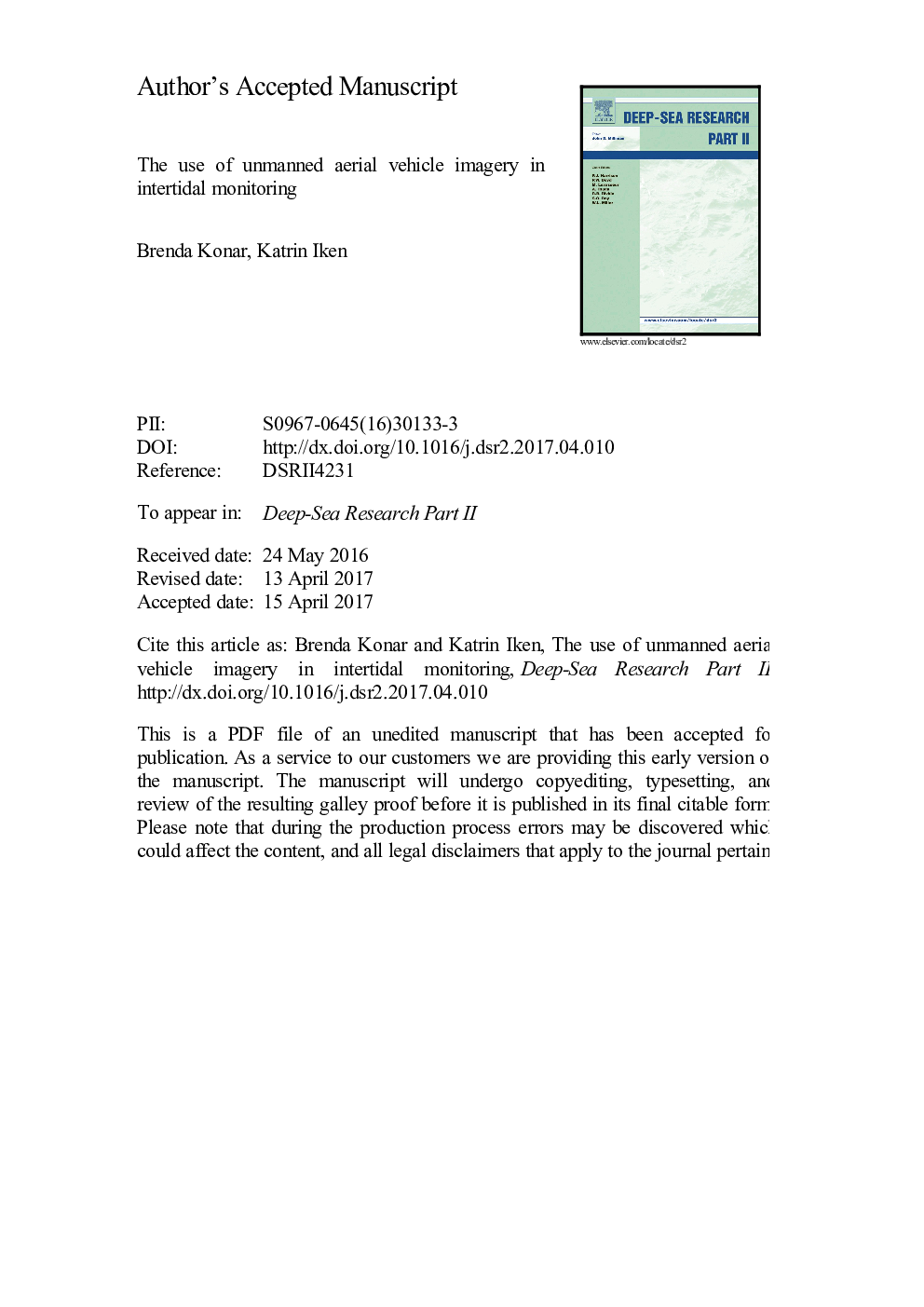| Article ID | Journal | Published Year | Pages | File Type |
|---|---|---|---|---|
| 8884497 | Deep Sea Research Part II: Topical Studies in Oceanography | 2018 | 27 Pages |
Abstract
Intertidal monitoring projects are often limited in their practicality because traditional methods such as visual surveys or removal of biota are often limited in the spatial extent for which data can be collected. Here, we used imagery from a small unmanned aerial vehicle (sUAV) to test their potential use in rocky intertidal and intertidal seagrass surveys in the northern Gulf of Alaska. Images captured by the sUAV in the high, mid and low intertidal strata on a rocky beach and within a seagrass bed were compared to data derived concurrently from observer visual surveys and to images taken by observers on the ground. Observer visual data always resulted in the highest taxon richness, but when observer data were aggregated to the lower taxonomic resolution obtained by the sUAV images, overall community composition was mostly similar between the two methods. Ground camera images and sUAV images yielded mostly comparable community composition despite the typically higher taxonomic resolution obtained by the ground camera. We conclude that monitoring goals or research questions that can be answered on a relatively coarse taxonomic level can benefit from an sUAV-based approach because it allows much larger spatial coverage within the time constraints of a low tide interval than is possible by observers on the ground. We demonstrated this large-scale applicability by using sUAV images to develop maps that show the distribution patterns and patchiness of seagrass.
Keywords
Related Topics
Physical Sciences and Engineering
Earth and Planetary Sciences
Geology
Authors
Brenda Konar, Katrin Iken,
